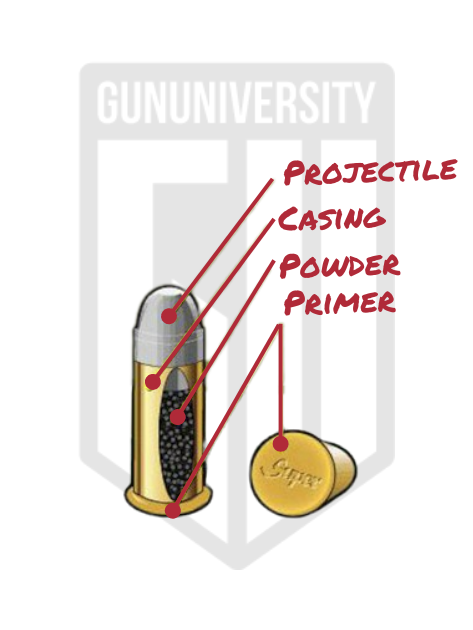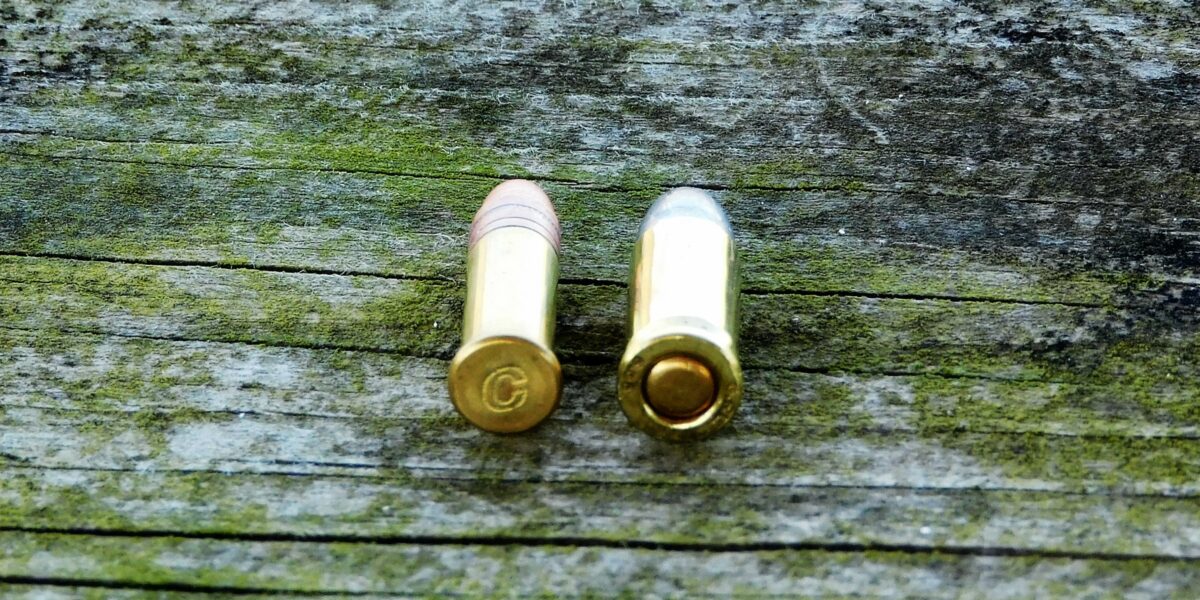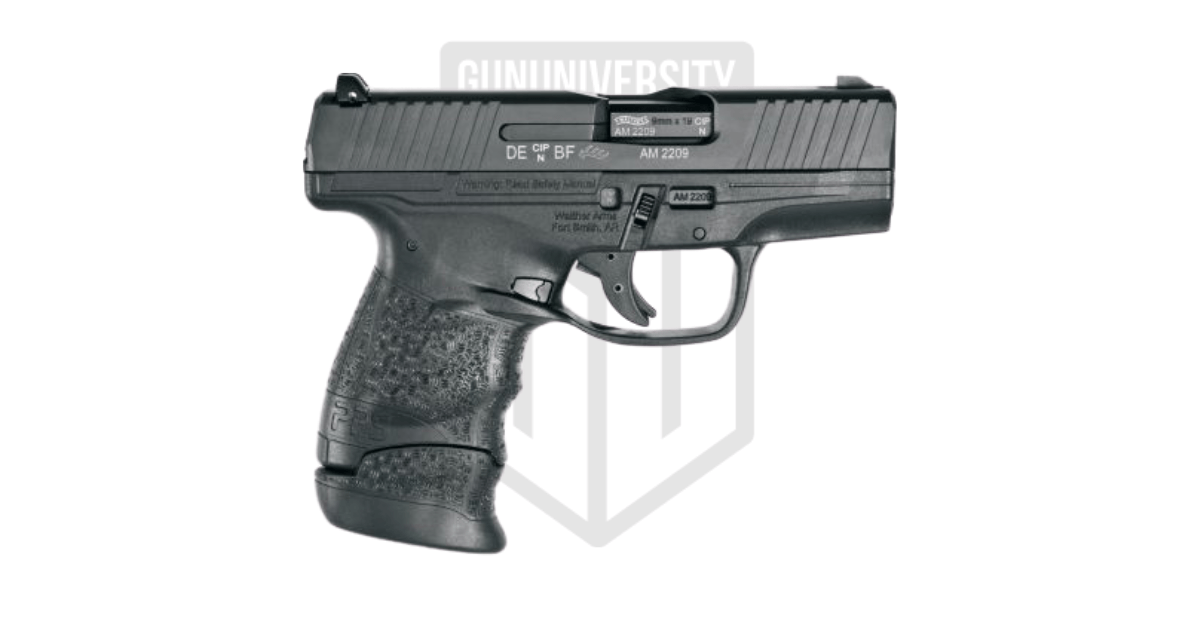Rimfire vs Centerfire: Explained for New Shooters
Navigating the world of ammunition can feel like wading through an endless sea of options. From rifles to pistols, shotguns, and everything in between, the variety can be both captivating and bewildering. Amidst the array of calibers, projectile styles, and case designs, one crucial distinction stands out: rimfire vs centerfire ammunition. In this exploration, I’ll delve into the history, characteristics, and pros and cons of both types, providing a comprehensive guide to help streamline your journey in the realm of firearms and ammunition selection.
Definitions of Rimfire and Centerfire
Before we run too far down the rabbit hole, it is worth setting the definition as to what constitutes rimfire and centerfire. When I, and most folks, refer to these, it is in regard to the method of ignition. Every round of ammunition has a case, gunpowder, and a projectile. Each also has a priming method, the method by which we set the cartridge off.
They make a rimfire cartridge case from thin drawn brass and have a large rim at the head of the case. The priming compound is packed into the rim, which detonates when the firing pin crushes it. The most common cartridge that is loaded in this manner is the 22 Long Rifle round, but there are many others, including the 17 HMR, 22 Winchester Magnum, and 5mm Remington Magnum.
By contrast, a centerfire case is machined to take a primer. A primer is a small cup and anvil packed with the same explosive compound. The difference is that it is a single compressed unit seated in the center of the head of the case. When the trigger is pulled, the firing pin will crush the primer and set off the cartridge. Most cartridges you are apt to find, from 5.56×45 NATO, to 45 ACP, to 12-gauge, are going to use centerfire ignition. Given the disparity in selection, why learn about rimfire at all?
Why Bother With Rimfire vs Centerfire?

There are compelling reasons to be informed about both rimfire and centerfire ammunition, both in the ammunition itself and with the firearms that use them. Whether you are a veteran shooter or a new gun owner, it might be more material to learn the ins and outs of rimfire. But if you are looking for a firearm for personal defense, you might steer clear of rimfire if possible. Whether it is for target shooting, hunting, or personal protection, gun manufacturers give us plenty of options, but they split it between rimfire and centerfire. Both put bullets in targets, but how they do so matters in terms of both performance and maintenance of your gear.
Rimfire Review
Rimfire ammunition is the oldest type of self-contained cartridge still in common use. In fact, sales of the little 22 LR alone make it the most common ignition system out there, despite a lack of cartridge diversity. Rimfire ammo is rich in history and has quite a few advantages and a few notable disadvantages over later centerfire rounds.

History
In 1807, the Scottish cleric Alexander Forsynth patented a new firearm ignition system fashioned around small bottles of fulminate of mercury. On impact with a hammer, the bottle would snap flames into the main source of powder. Over the next few decades, gun makers would abandon flintlock guns for this new explosive, refining it and containing it into a small brass or tin cup that was sensitive to percussion—the percussion cap.
By the 1840s, French designers were using these caps on fixed brass cased ammunition and even enlarging the caps to take a small amount of powder and a projectile. Some of these little proto-cartridges include the 22 CB, the modern ancestor to the 22 rimfire cartridge. Soon it became feasible to draw brass cases on an assembly line. They dropped the fulminate into the bottom of the case and then spun it until it packed the edges of the rim before installing the powder and bullet.
The American Civil War saw the first use of cartridge guns as we would know them today. Union troopers employed rimfire rifle rounds like the 44 Henry Rimfire and the 56-50 Spencer, while some enterprising officers carried small Smith & Wesson tip-up revolvers that shot the 22 and 32 Short rounds. Small and large-bore rimfire cartridges continued to be manufactured post-war, even as centerfire cartridges like the 50-70 and the 45 Colt came into being. One compelling reason for the switch was both reliability and durability. The uneven packing of the compound in a round’s rim sometimes caused dud rounds, where the hammer struck but the round failed to fire. The thinness of the rimfire cases limited the power of the round that could be contained.
People ensured that rimfire cartridges did not go the way of the dinosaurs. Rimfire ammunition required fewer raw materials and could be made cheaply. By the turn of the 20th century, many of the larger 32, 41, and 44 rimfire cartridges died off, but the 22 carried on as a family of cartridges: the original 22 Short, the 22 Long, and the ever popular 22 Long Rifle. In the twentieth century, gun makers have continually tried to push the rimfire case with more powerful cartridges like the 22 Winchester Magnum Rimfire and the 5mm Remington Magnum, as well as in the twenty-first with bottlenecked varmint cartridges like the 17 Mach 2 and 17 HMR. While we often employ rounds like these in bolt action and lever action rifles for small game and pest control, autoloading rifles and handguns are also available—particularly in 22 LR and 22 Magnum.
Rimfire Pros and Cons
- Economy– Save for some of the most exotic loadings, rimfire ammunition is less expensive to buy than centerfire ammunition. The 22 Long Rifle also has the distinction of mass availability.
- Variety– Today’s rimfire ammunition is available with a number of projectile styles to suit a shooter’s needs from nonexpanding solid rounds for target work, to segmented loads for varmint use, to specialized personal defense loads—all of which are available for the same chambering.
- Unreliability– Dud rounds still occur. Sometimes the ammunition or the firearm is at fault, but it is a feature rather than a bug of rimfire loads.
- Low Power– The thickness of the brass case sets limits on how powerful a rimfire cartridge can get before the case is destroyed. Thus, most rimfire ammunition is sedate compared to centerfire ammunition.
Centerfire Review
Most types of ammunition you will find on the shelf today will probably be centerfire. But what makes it so special and what are the advantages?

History
Rimfire ammunition soldiered on in the Civil War surprisingly well, but there were technical and logistical problems that became harder to ignore, particularly as the US Army shrank to become a frontier constabulary force in the late 1860s. Rimfire rounds were somewhat fragile, not particularly powerful, had reliability problems, and the cases were useless after firing. For a force that is strung out by vast distances from Eastern supplies, it was inevitable that existing rimfire guns would prove inadequate to the threats it faced and ammunition would be in poor condition by the time it reached the place of need.
The centerfire cartridge emerged from these various tribulations and the public followed suit. Initially, these cases used a percussion cap hidden in the center of the case. Later, percussion caps were inserted into a steel insert with a brass or copper case drawn around it. That gave way to the solid-head machined brass case we know today. The solid-head had a primer pocket that held the cap in place, protecting the powder from the elements, and giving the cap no where to move except against the wall of the case-head, increasing reliability. One could later punch out the spent cap and reload the brass. People created newer and more interesting cartridges by forming and shortening the thicker-gauge brass. Some of the most modern cartridges out there today are simple refinements of old.
Centerfire Pros and Cons
- Reliability– Because of its solid case head paired with an immovable primer cup, there is less chance of getting a dud round.
- Durability– Brass, aluminum, and steel cased centerfire ammunition is made of thicker-gauge brass that is less likely to ding or become warped in use.
- Economy– The durability and reliability of centerfire ammunition comes at a higher cost.
Specialized

While single rimfire cartridges can have personal protection, target, and hunting ammunition under one umbrella, centerfire ammunition is more fixed in concept. Shotgun shells are meant for shotguns and generally, rifle and pistol cartridges do not mix in similar platforms. Some centerfire ammunition will have defensive, target, and hunting loadings available, while we will pigeonhole others into one category or another.
A Case Study: The 22 LR vs. The 9mm Luger
Comparing modern rimfire and centerfire ammunition quickly devolves into an apples and oranges comparison between two different options that do not seem to relate. However, the differences matter. I can eat the apple with no mess, while the orange doesn’t bruise easily. In the rimfire and centerfire world, let us take two of the most popular offerings on the shelf: the 22 LR and the 9mm Luger.
The 22 LR is a small-bore rimfire cartridge designed for rifles. The 9mm Luger is a medium-caliber center-fire pistol cartridge. But over the years, they have flexed both cartridges into different platforms. 9mm carbines have existed nearly as long as the round has been in existence as has 22 LR chambered revolvers and pistols. In handguns as well as rifles, both are a viable option for pest work and even personal protection, yet both rounds could not be any more different dimensionally and ballistically.
The typical 22 LR uses a heeled .22-inch 40 grain lead bullet traveling between 850-1400 feet per second, depending on the loading and the length of barrel it is pushed out of. The 9mm Luger has a rimless case and uses a .355-inch jacketed bullet that typically ranges between 115-147 grains in weight at velocities that overlap the 22 LR. But the extra mass afforded to the 9mm, as well as the higher pressures it is loaded to, afford it more power no matter the firearm used.
Although power is important, it is not everything. The 22 LR is weaker, but its ballistics are not necessarily terrible. Firearms chambered for 22 LR are also inexpensive and produce low recoil and low noise. Be prepared for a higher investment, somewhat more recoil, and more noise with the 9mm. This can make the difference if you are a new shooter or are on a budget, and knowing the difference between rimfire and centerfire is important.
But perhaps the most important reason to spot the difference is about the expectations of a firearm in conjunction with the ammunition. A quality centerfire 9mm pistol should be able to run through several hundred rounds in a class without malfunction or the need for a complete cleaning. A comparable pistol in 22 Long Rifle, even with the best ammunition, can still fail to fire due to dud ammunition. But even with the cleanest run, the pistol will begin to get sticky after several hundred rounds and the lead and priming compound residue inherent to rimfire ammunition. A 22 can do the job and has its own advantages, but more care is required.
Rimfire guns require more frequent cleaning to run reliably and most should never be dry-fired. Dry-firing is the practice of pulling the trigger on the firearm without any ammunition in the gun. Dry-fire practice is preached in modern training philosophy to develop muscle memory for the proper trigger press, sight alignment, sight picture, and follow through. This is excellent for marksmanship training, but not all guns can handle it. Because the firing pin strikes the rim of the rimfire case, the firing pin is off center of the bore. Without a brass case to deaden the blow, the firing pin might break against the edge of the chamber wall. Repeated dry-firing can even create a bur inside the wall, preventing ammunition from chambering in the first place. Old rimfire guns should never be dry fired, and some will say never dry fire any rimfire. But the newer the gun, the more forgiving it is. But to cover yourself either way, dry-fire a rimfire with snap caps or old empty brass.
Most modern centerfire guns can be safely dry-fired to your heart’s content with no problems at all, but some firearms—particularly those with fixed firing pins like old Smith & Wesson revolvers—can develop problems from dry-firing too. No rule is universal, but in general, you cannot treat centerfire guns the same as rimfire models even if they are from the same brand and age. Both are fine choices, but we should always manage expectations.
Below we have articles to our favorite 9mm and 22lr firearms:
Authors Take on Rimfire vs Centerfire
If you looked at the inside of my safe, you would figure that I have a bias in favor of rimfire cartridges. I own more 22 rimfire rifles and pistols than I know what to do with and keep thousands of rounds in my stocks. But that is not because rimfire is better, but because it covers my bases. Whether I am teaching a new shooter, hunting for the pot, or carrying a pistol as deep concealment in the Louisiana summer heat, rimfire guns simply fit the bill. Rimfire guns are easy to acquire, easy to shoot well, and, in the context of concealed carry, can be made smaller than even the smallest common centerfire guns.
However, I do own my share of centerfire guns and, depending on the context, it is the better choice I would recommend to a friend or family member. Outside a few niche roles, centerfire guns are going to be more effective and reliable for personal protection and they are well worth the price premium to get into. The worst thing that could happen in self defense is to get a click instead of a bang. About the second worst thing is, if you are a hunter, to wound an animal. Most US states prohibit rimfire rounds on big game and with good reason. Centerfire ammunition gives you power to spare and an infinitive number of cartridge options that can be balanced against your budget, your ability, and the environment you are going to employ arms.
Editors Note on Rimfire Vs Centerfire
There is no winner or loser in this comparison. Both rimfire and centerfire ammunition serve a purpose. We feel it is important to know the differences between the two and understand the pros and cons of each, so you can make an informed decision for both cartridge and weapon selection to meet your unique set of needs and goals.
For more information, check out this short video from NRA Pubs explaining rimfire vs centerfire ammunition.
FAQ
What exactly is the difference between rimfire and centerfire ammunition? Rimfire and centerfire ammunition primarily differ in their primer ignition systems. In rimfire cartridges, the primer is located within the rim of the casing, while in centerfire cartridges, the primer is situated in the center of the base of the casing.
Which firearms use rimfire ammunition, and which use centerfire? Rimfire cartridges are commonly found in smaller calibers used in handguns, rifles (like .22LR), and some small game hunting firearms. Centerfire cartridges are more versatile, used across a wide range of firearms including handguns, rifles, shotguns, and larger caliber hunting rifles.
Are there any notable advantages of rimfire over centerfire or vice versa? Rimfire cartridges tend to be less expensive and lighter, making them ideal for recreational shooting and small game hunting. Centerfire cartridges, however, offer higher reliability, greater power, and are reloadable, making them suitable for a wider range of applications and firearms.
Can I reload rimfire or centerfire cartridges? Rimfire cartridges are not reloadable due to their construction, while centerfire cartridges can be reloaded by replacing the primer in the center of the casing.
Are rimfire and centerfire ammunitions interchangeable? No, they are not interchangeable. Firearms are specifically designed to use either rimfire or centerfire ammunition based on the type of firing mechanism they incorporate. Attempting to use the wrong type of ammunition can damage the firearm and may result in safety hazards.
Which type of ammunition is more readily available in the market? Generally, centerfire ammunition enjoys wider availability across various calibers compared to rimfire. However, the popularity of specific calibers can affect availability in certain regions or times.
Are there any safety considerations unique to rimfire or centerfire ammunition? Both types of ammunition demand adherence to proper handling, storage, and usage guidelines. However, due to the way rimfire cartridges are constructed, they can be more sensitive to rough handling and damage, requiring extra care during storage and transportation.
Recent Posts
December 20, 2025
December 15, 2025
December 15, 2025
December 12, 2025




